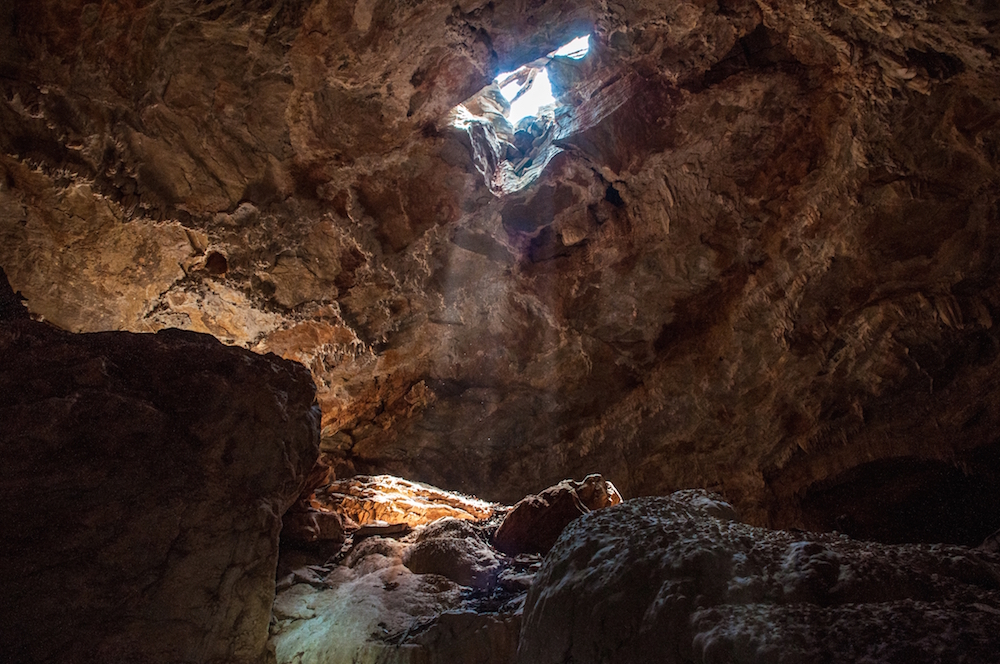Not So Precious: Eyeless 'Smeagol' Arachnid Discovered in Underground Lair

In a deep, dank cave in Brazil, a pale, blind creature lurks, never venturing out to feel the sun.
No, it's not a monster; it's Smeagol (SMEE-guhl), or Iandumoema smeagol, a newly discovered species of arachnid named for the infamous, goblinlike character (also known as Gollum) from the "Lord of the Rings" trilogy. But I. smeagol isn't a hobbit gone haywire — it's a harvestman, or a member of the Opiliones order of arachnids. Researchers recently found the creature in its underground lair, a limestone cave in southeastern Brazil, and described it for the first time today (Nov. 18) in the journal ZooKeys.
You may know harvestmen as "daddy longlegs," those spiderlike critters that crawl all over the yard during the summer months. But harvestmen aren't spiders and are more closely related to other arachnid orders, such as Solifugae (camel spiders) and Scorpionida (scorpions). [Images: 4-Eyed Daddy Longlegs Help Explain Arachnid Evolution]
Scientists have discovered several species of harvestmen that make their homes underground. (It's a good place to hide out if you don't possess an invisibility-inducing ring like in "Lord of the Rings.") But I. smeagol is the only known harvestman in the genus Iandumoema that is completely eyeless, and therefore completely blind.
The arachnid's blindness is an example of troglomorphism, or a physical adaptation that results from living in the constant darkness of caves. Troglomorphisms such as blindness and loss of pigment are observed in many species of cave-dwelling animals, such as the olm (Proteus anguinus), a pale, eyeless salamander that inhabits the limestone caves of southern Europe.
Like the olm, the Smeagol harvestman has a pale yellowish coloring, a result of its reduced amount of melanistic pigmentation (the pigments that give terrestrial species their darker hues). In 2008, another team of researchers discovered a similar-looking harvestman in the limestone caves of Minas Gerais, a state in southeastern Brazil (the same state where the new Smeagol harvestman was discovered). But unlike I. smeagol, the cave-dwelling species I. setimapocu has a pair of pale-colored eyes.
What really sets I. setimapocu apart, however, is the creature's elongated, spindly legs. This harvestman's name means, roughly, "long legs" in the language of the indigenous Tupi people of Brazil, and some of its legs are nearly 1.5 inches (3.8 centimeters) long. However, the Brazilian arachnid's lengthy appendages are stumpy when compared to those of certain harvestman species in other parts of the world. A cave-dwelling harvestman in Laos, for example, has legs that measure more than 13 inches (33 cm) long. Extra-long legs are another adaptation to life underground that may help these critters feel their way around in the dark.
Get the world’s most fascinating discoveries delivered straight to your inbox.
The Smeagol harvestman is just one of the various many-legged critters newly described by cave-exploring scientists this year. In June, a group of researchers in Croatia stumbled upon a species of centipede with 33 pairs of legs, Geophilus hadesi, which they named for Hades, the mythological god of the underworld.
Follow Elizabeth Palermo @techEpalermo. Follow Live Science @livescience, Facebook & Google+. Original article on Live Science.



